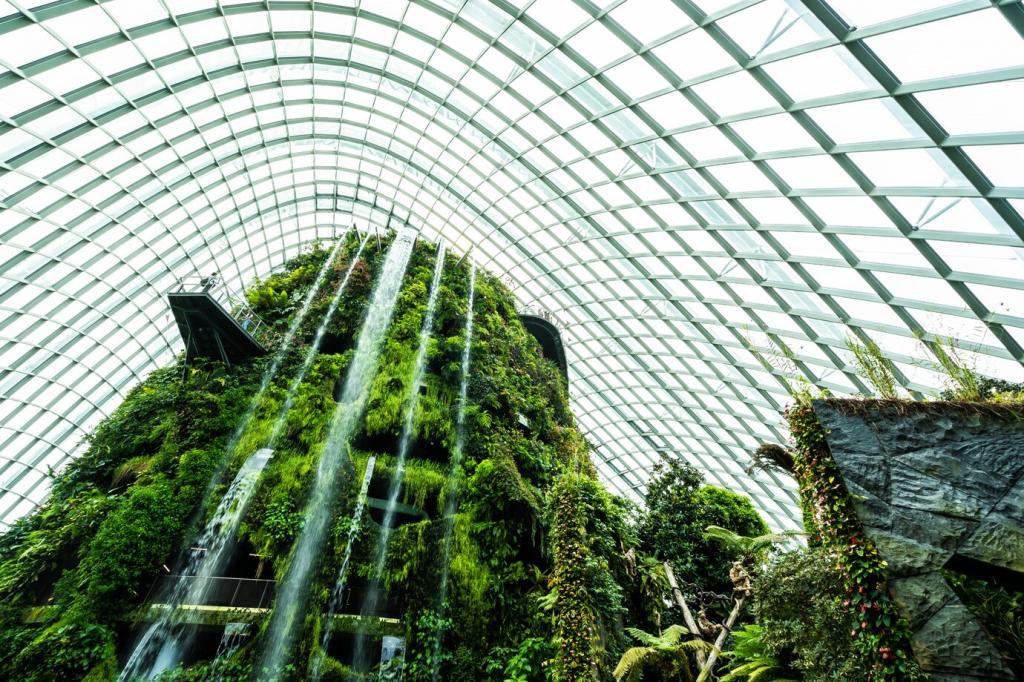Design Principles for Eco-Friendly Tiny Homes
Designing eco-friendly tiny homes involves a thoughtful blend of sustainability, functionality, and aesthetics. Embracing principles that conserve resources and harmonize with nature, these structures promise minimal environmental impact without sacrificing comfort. This guide explores essential concepts and innovative strategies that help create healthy, efficient, and resilient micro-living spaces. Whether you are a designer, builder, or enthusiast, understanding these design principles can inspire you to craft a tiny home that not only meets your needs but also contributes positively to the planet.
Sustainable Material Selection
01
Reclaimed and Recycled Content
Utilizing reclaimed wood, recycled metal, or salvaged fixtures allows tiny homes to embody sustainability from the very foundation. These materials not only reduce waste that would otherwise fill landfills but also require less energy to process compared to new resources. The character and history embedded in reclaimed materials add unique charm and story to each home, making every space distinct. By opting for recycled content, designers help close the waste loop, turning discarded resources into valuable assets while lessening the demand for virgin materials.
02
Locally Sourced Products
Incorporating building materials harvested or manufactured near the build site reduces transportation emissions and supports local economies. Local timbers, stone, and natural fibers are often suited to the climate and landscape, enhancing both durability and aesthetics. Engaging with nearby suppliers can also foster community connections and provide insight into the origins of materials. This local approach not only minimizes environmental impact but also enriches the story and authenticity of the home.
03
Low-VOC and Non-Toxic Finishes
The use of low-VOC (volatile organic compound) paints, adhesives, and finishes is critical to maintaining indoor air quality within a compact space. Non-toxic materials help create a healthier living environment, reducing the risk of allergies, respiratory issues, and long-term health problems. By selecting natural finishes, such as linseed oil or beeswax, designers ensure surfaces that are safe to touch, beautiful, and sustainable. These products often require less frequent maintenance, promoting longevity and well-being for the inhabitants.
Passive Design Strategies
Optimizing the house’s orientation to capture the sun’s warmth in winter and provide shade in summer is a crucial element of passive design. Strategic window placement allows for ample daylight to enter, minimizing the need for artificial lighting and creating a bright, inviting interior. Overhangs, shading devices, and window films further modulate sunlight exposure, protecting against overheating in warmer months. Thoughtful solar orientation not only enhances energy efficiency but also improves overall comfort throughout the year.
Transformative Furniture Solutions
Incorporating furniture that adapts to multiple uses—such as sofa beds, fold-away tables, or expandable counters—enables each area to serve several roles throughout the day. These elements help residents transition seamlessly between living, working, and entertaining without feeling cramped. Thoughtful furniture choices can blend seamlessly with the architectural style, providing both utility and visual harmony. Embracing transformative solutions prevents wasted space, allowing even the smallest homes to feel open and functional.
Built-In Storage Innovations
Cleverly integrated storage exploits unused nooks, under-stair cavities, and vertical space, providing ample room for belongings without intruding upon living areas. Pull-out drawers, hidden compartments, and built-in shelving enable homeowners to keep possessions organized and accessible. By ensuring that every inch is put to practical use, these innovations help maintain an orderly, serene environment that supports minimalist living. Prioritizing built-in storage also reduces the need for bulky standalone furniture.
Flexible Floor Plan Configurations
Designing with flexibility in mind allows interiors to adapt to changing needs, lifestyles, or family sizes. Moveable partitions, sliding doors, and modular walls help reconfigure spaces for privacy, entertaining, or work as necessary. This adaptability ensures that the home remains functional and delightful as circumstances evolve. Flexible layouts offer not just versatility but also sustainability, as they can accommodate different uses over time without the need for costly renovations or expansions.
Solar Power Integration
Harnessing solar energy through rooftop panels or integrated systems enables tiny homes to operate off-grid or drastically cut reliance on conventional power sources. Modern photovoltaic technologies are compact, efficient, and capable of powering not only lighting and outlets but also major appliances and heating systems. By investing in clean energy generation, homeowners hedge against utility price fluctuations and lessen their carbon footprint. Solar setups can be scaled to fit budget, lifestyle needs, and local climate conditions, ensuring flexibility and resilience.
High-Efficiency Appliances
Every watt counts in a tiny home. Installing appliances that are ENERGY STAR-rated or specifically designed for small spaces ensures tasks are performed with minimal energy use. Modern heat pumps, tankless water heaters, induction cooktops, and efficient refrigeration all contribute to lower energy bills. Choosing compact, multi-functional, or smart appliances further conserves space and utility consumption. By prioritizing efficient technology, tiny homeowners elevate their sustainability while maintaining a high quality of life.
Smart Home Energy Monitoring
Implementing smart meters and monitoring devices allows residents to track real-time energy consumption and make informed choices about usage patterns. These systems provide valuable insights into which areas draw the most power and offer suggestions for improvement. Automated controls for lighting, climate, and appliances further enhance efficiency by responding to occupancy and schedule changes. Energy monitoring not only empowers homeowners to reduce waste, but also helps maintain the delicate balance required in a small, self-sufficient home.
Collecting and storing rainwater from the roof provides a supplementary water supply ideal for gardening, washing, or even potable use with appropriate filtration. Efficient catchment systems channel runoff into tanks or cisterns, reducing dependency on municipal sources and lessening the strain on local water tables. Rainwater harvesting not only preserves critical resources but also offers resilience during droughts or supply interruptions, enabling homes to function sustainably in diverse climates.
Water Conservation and Management

Careful siting and construction techniques avoid unnecessary damage to vegetation, soil, and wildlife habitats during and after the building process. Employing pier foundations, avoiding extensive excavation, and preserving natural landforms protect biodiversity and reduce erosion. By minimizing the home’s footprint, designers foster a healthier ecosystem, promote water retention, and reduce restoration costs. Such low-impact integration ensures that living lightly truly extends from construction through daily occupancy.

Using indigenous plant species for landscaping conserves water, eliminates the need for chemical fertilizers, and supports local pollinators. Native gardens require less maintenance, adapt better to local climate conditions, and foster a sense of place unique to the region. By restoring habitat and enhancing biodiversity, homeowners create thriving, resilient outdoor environments that complement the sustainability of the home itself. This approach also helps mitigate climate change impacts by sequestering carbon and promoting ecological health.

Expanding living areas to the outdoors with decks, patios, or green roofs increases usable space without enlarging the home’s footprint. Thoughtfully designed outdoor extensions invite natural light, air, and scenery into daily routines, supporting mental well-being and lifestyle flexibility. These features, especially when built of sustainable materials, can include edible gardens, rain gardens, or meditation areas, providing both practical and restorative benefits. Blurring the line between inside and outside reinforces a deep connection with the environment.
Healthy Indoor Environments
Ventilation and Air Filtration
Proper ventilation is essential to remove moisture, odors, and pollutants while supplying fresh air. Mechanical heat recovery ventilators or energy-efficient exhaust fans help maintain excellent air quality without significant energy loss. Integrating high-efficiency particulate air (HEPA) filters addresses allergens and fine particles, which is especially important in geographically diverse locations. Robust fresh air circulation creates an inviting, healthy atmosphere, ensuring comfort and peace of mind for residents.
Maximized Natural Light
Good daylighting design reduces reliance on artificial lighting, impacts mood positively, and regulates circadian rhythms. Selecting window configurations and glazing that balance light transmission with thermal retention fills interiors with uplifting sunlight throughout the day. Incorporating reflective surfaces or light wells can further amplify illumination, making small spaces feel larger and more vibrant. Prioritizing natural light in design not only promotes eco-friendliness but also supports holistic health.
Low-Emission Furnishings and Finishes
All elements inside a tiny home—from furniture to fabrics to flooring—should be carefully selected for low emissions of volatile organic compounds and other toxins. Opting for products certified by sustainable forestry programs, green labels, or environmental standards ensures materials are safe and environmentally friendly. These choices foster a nurturing indoor environment, reducing risks associated with chemical sensitivities or chronic exposure over time. A commitment to low-emission interiors is key for both planetary and personal health.
